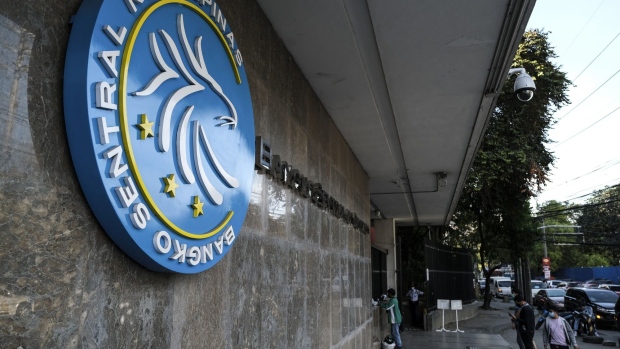Apr 17, 2024
Philippine Central Bank’s Deputy Governor Sees Upside Risks to Inflation
, Bloomberg News

(Bloomberg) -- The Philippine central bank is committed to maintaining price stability as risks to inflation remain on the upside, according to its deputy governor.
Inflation may breach Bangko Sentral ng Pilipinas’ target of 2%-4% in the second quarter before easing back to within that range in the second half, Francis Dakila Jr. said in Washington on Wednesday. For the entire year, inflation is expected to average at around 3.8%, with a risk-adjusted forecast at 4%, he added.
“The board has maintained the appropriate monetary policy stance” to ensure inflation will be consistent with achieving that target, Dakila said.
Central bank Governor Eli Remolona has signaled that monetary easing may be pushed back to later this year or early 2025 as inflation has remained stubborn. Just like many of his peers across the world, Remolona has indicated that he’s not in a rush to lower borrowing costs and wanted to see more evidence of firmly decelerating price pressures before pivoting to easing.
Price risks in the Philippines have lingered even after the BSP’s most-aggressive tightening campaign in two decades that has taken the key rate to a 17-year high. It helped that economic growth remained among the fastest in the region.
Indicators suggest that growth prospects remains intact, with a robust and resilient external sector, Dakila said. “Alongside our policy space, this will continue to provide us a cushion against any potential global spillovers to domestic inflation and the growth path.”
Rice inflation in the Philippines hit a fresh 15-year high in March, driving the overall print to accelerate for a second straight month. Meanwhile, the peso fell past the closely watched 57-per-dollar level for the first time since November 2022, as expectations that the Federal Reserve will delay interest-rate cuts weighed on risk assets.
Asked if he was concerned over the peso’s weakness, Dakila said currencies in the region are being affected by the Fed but that the Philippines had some advantage through services trade. “Going forward, the structural sources of foreign exchange are expected to provide support to the peso,” he said.
--With assistance from Ditas Lopez and Clarissa Batino.
©2024 Bloomberg L.P.






